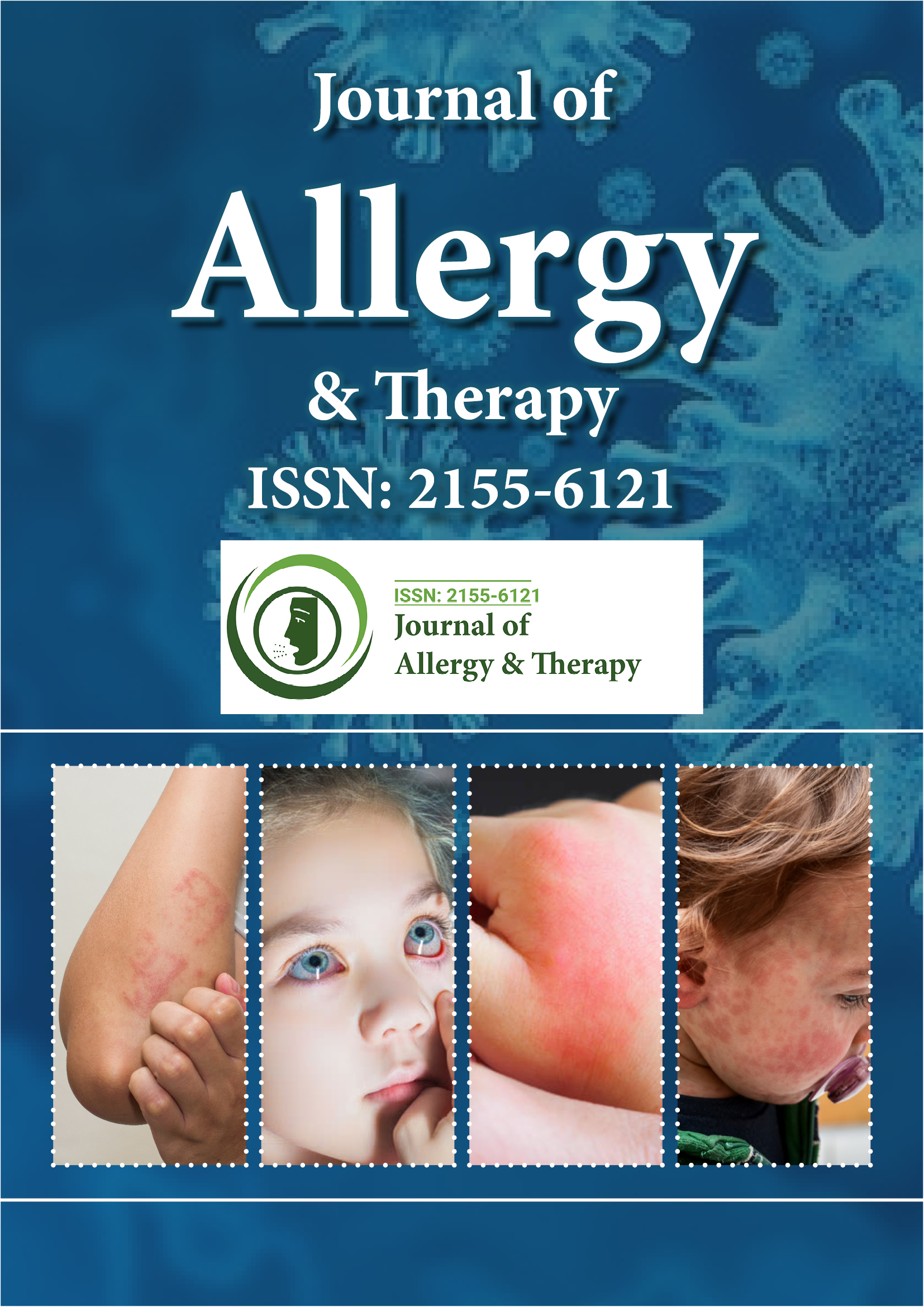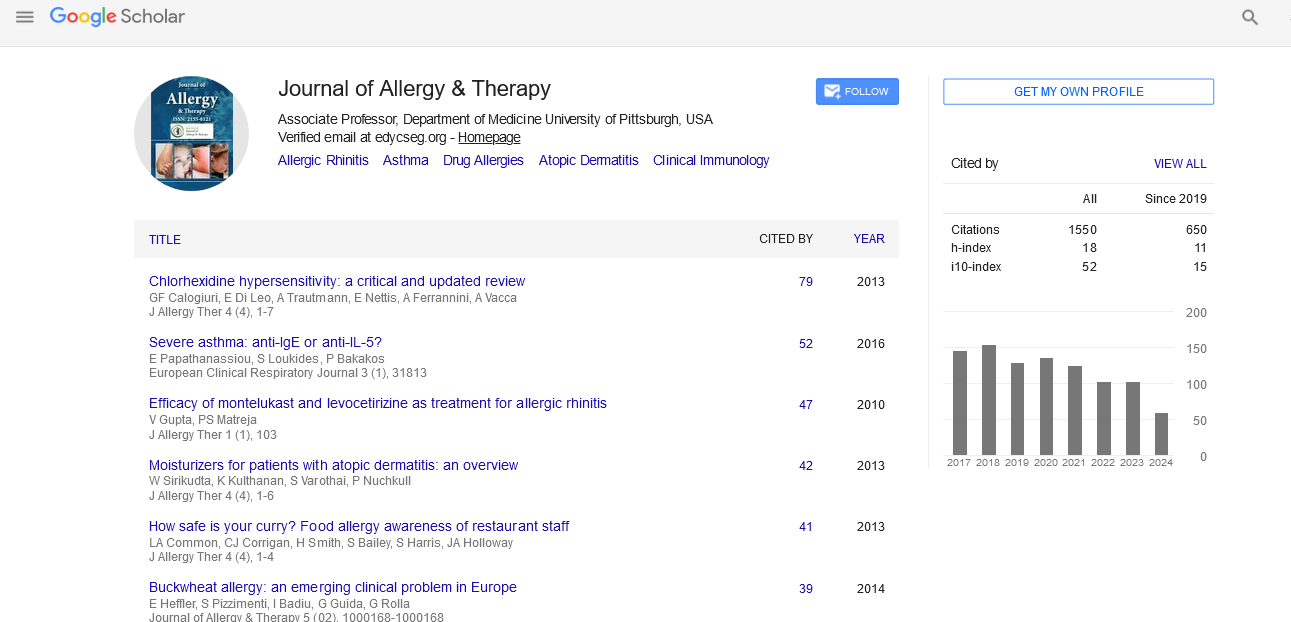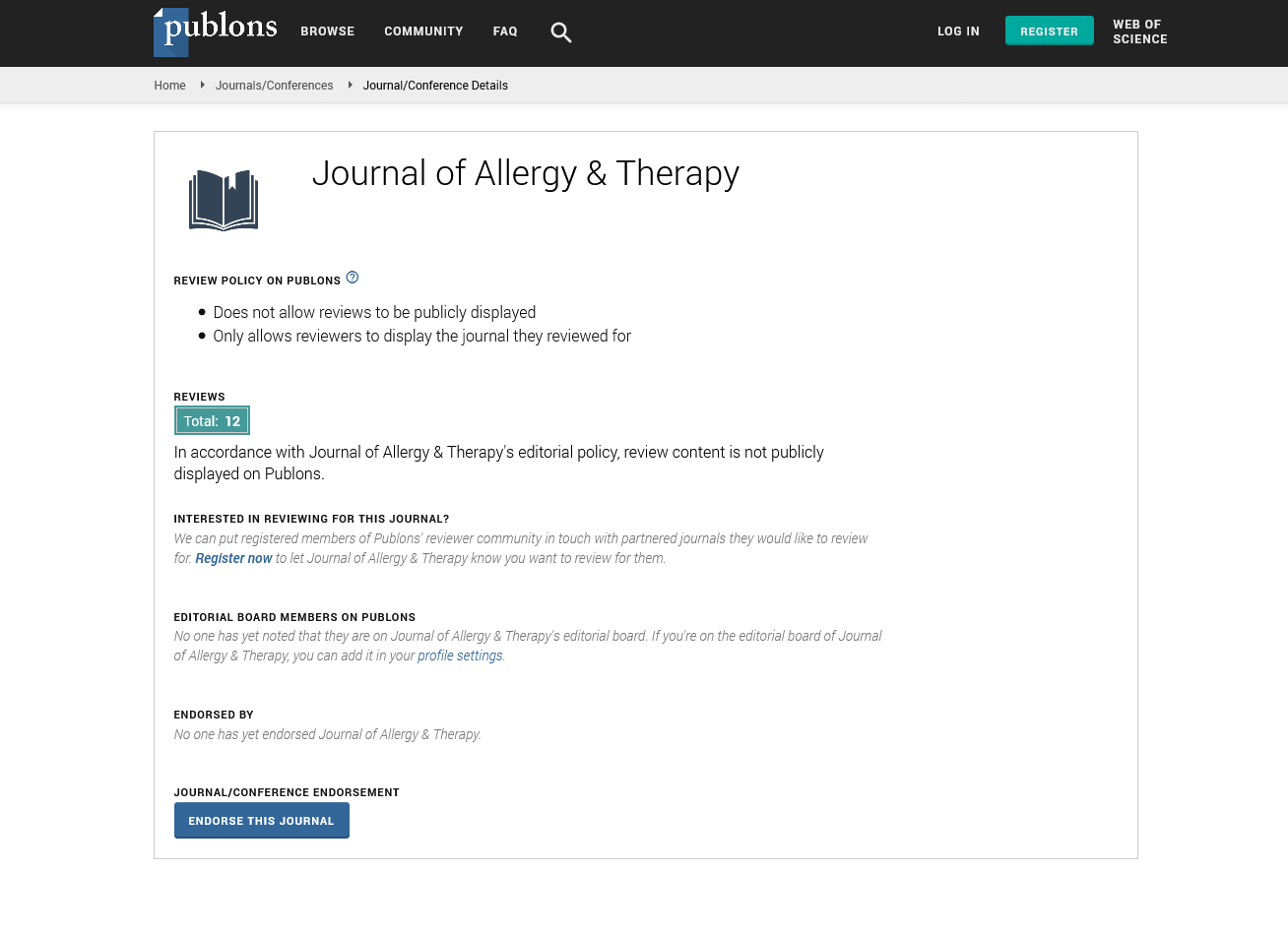Indexed In
- Academic Journals Database
- Open J Gate
- Genamics JournalSeek
- Academic Keys
- JournalTOCs
- China National Knowledge Infrastructure (CNKI)
- Ulrich's Periodicals Directory
- Electronic Journals Library
- RefSeek
- Hamdard University
- EBSCO A-Z
- OCLC- WorldCat
- SWB online catalog
- Virtual Library of Biology (vifabio)
- Publons
- Geneva Foundation for Medical Education and Research
- Euro Pub
- Google Scholar
Useful Links
Share This Page
Journal Flyer

Open Access Journals
- Agri and Aquaculture
- Biochemistry
- Bioinformatics & Systems Biology
- Business & Management
- Chemistry
- Clinical Sciences
- Engineering
- Food & Nutrition
- General Science
- Genetics & Molecular Biology
- Immunology & Microbiology
- Medical Sciences
- Neuroscience & Psychology
- Nursing & Health Care
- Pharmaceutical Sciences
Perspective - (2025) Volume 16, Issue 2
Recognizing Primary Immune Deficiencies Early to Prevent Severe Infections and Improve Patient Outcomes
Claus Heiner*Received: 30-Apr-2025 Editor assigned: 02-May-2025 Reviewed: 16-May-2025 Revised: 23-May-2025 Published: 30-May-2025, DOI: 10.35248/2155-6121.25.16.426
Description
Primary Immune Deficiencies (PIDs) are a group of rare, chronic disorders caused by intrinsic defects in the immune system. These conditions impair the body’s ability to defend itself against infections, resulting in increased susceptibility to bacteria, viruses, fungi and other pathogens. Unlike secondary immune deficiencies, which are acquired due to external factors such as chemotherapy or malnutrition, PIDs are typically inherited and present from birth, though their symptoms may not manifest until later in life. There are over 450 recognized types of primary immune deficiencies, each associated with varying degrees of immune dysfunction, clinical presentation and genetic background.
Individuals with PIDs often experience recurrent, severe, or unusual infections that may not respond well to standard treatments. Common signs include frequent ear infections, pneumonia, sinusitis, bronchitis and skin or gastrointestinal infections. In some cases, infections are caused by opportunistic or non-pathogenic organisms that would not typically cause disease in people with normal immune function. In addition to infections, some patients may develop autoimmune disorders, where the immune system mistakenly attacks the body's own tissues, or they may be more prone to certain cancers due to chronic immune dysregulation.
The most well-known category of primary immune deficiency is antibody deficiency, which affects the body’s ability to produce sufficient immunoglobulins (antibodies) to fight infections. The most common condition in this group is Common Variable Immunodeficiency (CVID), which typically presents in adolescence or adulthood and is characterized by low levels of Immunoglobulin G (IgG) and often IgA or IgM, leading to repeated respiratory and gastrointestinal infections. Another antibody-related disorder is X-Linked Agammaglobulinemia (XLA), a rare condition that almost exclusively affects males and results in the near-total absence of antibodies due to a mutation in the BTK gene.
Other forms of PIDs involve cellular immunity, affecting T-cells, B-cells, or both. Severe Combined Immunodeficiency (SCID), often referred to as "bubble boy disease," is one of the most severe forms of PID. Infants with SCID lack both functional T and B lymphocytes, rendering them highly susceptible to life-threatening infections. Without early diagnosis and treatment, typically through bone marrow or stem cell transplantation, affected infants rarely survive beyond the first year of life. Early screening, such as newborn screening programs that detect T-Cell Receptor Excision Circles (TRECs), has dramatically improved early identification and survival rates in many regions.
Phagocytic cell disorders are another group of PIDs that impair the ability of white blood cells like neutrophils to engulf and destroy pathogens. Chronic Granulomatous Disease (CGD) is an example, in which phagocytes can ingest but cannot effectively kill certain bacteria and fungi, leading to persistent infections and granuloma formation. Complement deficiencies, involving the proteins that help antibodies and phagocytic cells clear pathogens, also fall under PIDs and can predispose individuals to severe bacterial infections, particularly with encapsulated organisms such as Streptococcus pneumoniae and Neisseria meningitidis.
Diagnosing PIDs can be challenging due to the variability in symptoms and overlap with common childhood illnesses or other immune-related disorders. A detailed clinical history is crucial, including the frequency, severity and type of infections, family history of immune disorders and response to standard treatments. Laboratory tests typically include complete blood counts, immunoglobulin levels, vaccine response assessments, flow cytometry to evaluate immune cell populations and genetic testing to identify specific mutations. Early diagnosis is essential to initiate appropriate management and prevent complications such as chronic lung disease, organ damage, or developmental delays.
Treatment of primary immune deficiencies depends on the specific disorder and its severity. Many patients with antibody deficiencies benefit from immunoglobulin replacement therapy, administered intravenously or subcutaneously, to provide the missing antibodies and reduce the frequency and severity of infections. Antibiotic prophylaxis may be used to prevent recurrent bacterial infections. For severe conditions like SCID, hematopoietic stem cell transplantation offers a potential cure by reconstituting the immune system with healthy donor cells. Gene therapy, a cutting-edge treatment that corrects the underlying genetic defect, has shown promise in clinical trials for certain types of SCID and other PIDs, though accessibility and long-term outcomes are still under study.
Living with a primary immune deficiency requires comprehensive care and regular monitoring. Patients often work closely with immunologists, infectious disease specialists and other healthcare providers to manage infections and monitor immune function. Preventive strategies such as avoiding exposure to sick individuals, staying up to date with appropriate vaccinations (excluding live vaccines for some PIDs) and maintaining good hygiene are vital components of daily life. Emotional support and education for patients and families also play a critical role in improving quality of life and reducing the psychological burden of chronic illness.
Awareness of PIDs remains relatively low among the general public and even within the medical community, leading to frequent delays in diagnosis. Many patients endure years of misdiagnoses or untreated symptoms before receiving appropriate care. Increased education, access to genetic testing and widespread implementation of newborn screening can help bridge this gap and ensure timely intervention. Advocacy organizations and international efforts, such as World Primary Immunodeficiency Week, aim to raise awareness, promote research and improve access to life-saving therapies for individuals around the world.
Conclusion
In conclusion, primary immune deficiencies represent a diverse group of inherited disorders that compromise the body’s ability to fight infections and maintain immune balance. Although rare, early recognition, accurate diagnosis and tailored treatment can significantly improve outcomes and life expectancy for affected individuals. Continued research, public education and healthcare infrastructure support are essential to advancing care and ensuring that no one with a primary immune deficiency goes undiagnosed or untreated.
Citation: Heiner C (2025) Recognizing Primary Immune Deficiencies Early to Prevent Severe Infections and Improve Patient Outcomes. J Allergy Ther. 16:426.
Copyright: © 2025 Heiner C. This is an open-access article distributed under the terms of the Creative Commons Attribution License, which permits unrestricted use, distribution and reproduction in any medium, provided the original author and source are credited.


